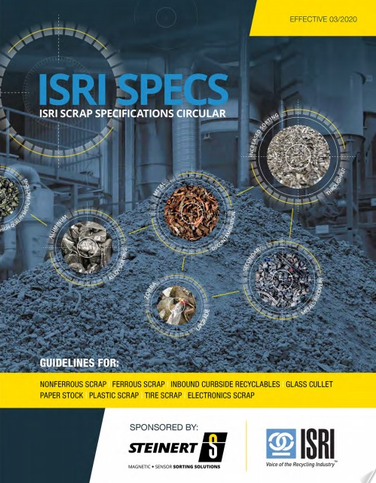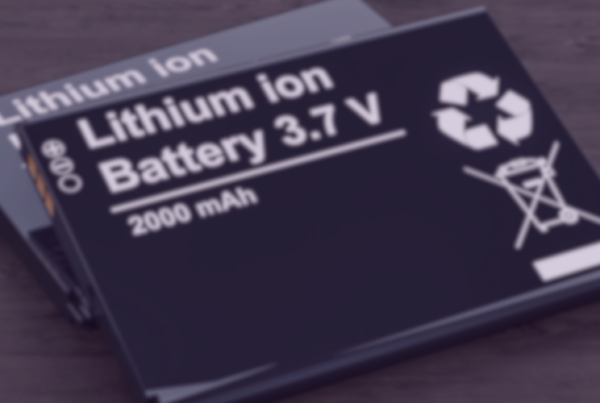“These are interesting times for the economy and scrap markets, but things are looking better than they were this time last year,” says Joe Pickard, ISRI’s chief economist, during a presentation to members of ISRI’s Mid-Atlantic Chapter. During his presentation, Pickard discussed the recycling market outlook. Despite challenges and hurdles, good expectations for COVID-19 recovery and likely manufacturing growth mean things are looking up.
U.S. and Global Economy
Experts are revising their projections, due to the pace of COVID-19 recovery and expected manufacturing growth for major world economies, Pickard says. The International Monetary Fund (IMF) reported the global economy will expand 6% this year, following a 3.3% contraction in 2020. For advanced economies, the overall expectation is 5.1% in growth this year compared to a 4.7% contraction in 2020. Emerging markets are expected to have the fastest growth at 6.2%. The IMF expects the U.S. economy to grow 6.4% this year — not only a significant increase from its previous projection but also historically significant. “If the U.S. grows that fast, it would be our fastest growth since the 1980s,” Pickard explains.
These projections are likely due in part to developments in the U.S. labor market. Monthly employment situation report numbers are encouraging. In March, the U.S. economy added over 900,000 jobs, higher than expectations. The U.S. unemployment rate continues to decline. While the unemployment rate is higher than it was before the outbreak of COVID-19, it’s lower than its 15% peak in April 2020.
Commodity Prices
2021 is experiencing rapid increases in copper, aluminum, and nickel prices. Copper prices remain volatile, Pickard says, but most nonferrous metal prices remain high. There is concern about commodity investor flows, particularly in China, which may have contributed to inflated prices. Analysts continue to expect high prices this year, which also impacts scrap prices.
The numbers are likely due to the rise of primary commodity prices and manufacturing output increases resulting from pent-up demand from the COVID-19 shutdown. The shutdown in the second quarter of 2020 continues to impact supply chains.
Commodity Export Markets
“When you look at the volume of material shipped in 2020, it’s down to 35 million tons, but the value of the material exported was up 8% to $20.8 billion,” Pickard says. “Part of that is the ramp-up of precious metals prices, but across the board there’s been strength in commodity prices.” That trend continued into 2021. Stainless steel scrap exports are down 60% so far this year, with significant declines in exports to Canada, India, Malaysia, Pakistan, and Taiwan, likely due in part to the container and vessel shortage.
Copper and copper alloy scrap exports have gained this year. In the first two months of 2021, 30,000 tons of material shipped to China, compared to 10,000 tons shipped one year ago. Exports to Canada, Malaysia, and to a lesser extent Greece also made gains. European demand is a bit weak, with fewer copper scrap shipments to Belgium and Germany. Shipments to India, South Korea, and other countries also declined. Pickard told a similar story regarding quantity/volume versus dollar terms. Copper scrap exports are up 25% year over year to $560 million through February 2021.
Countries including Malaysia, India, and South Korea are the major consumers of aluminum scrap. In 2016, Malaysia imported 4% of aluminum scrap U.S. exports while China imported 51%. In 2020, Malaysia imported 23% of aluminum scrap, while China imported 8%.
Growth markets for recovered paper this year include India, Malaysia, Mexico, Thailand, and Vietnam. Overall, recovered paper exports increased 1.3% in January 2021 compared to January 2020.
Major Challenges
There are several major challenges facing the U.S. recycling industry in 2021. “The vessel and container shortage continue to plague the entire industry,” Pickard says. There are also supply chain challenges, particularly the shortage of semiconductors could hurt auto production. Other challenges include transportation issues and labor shortages due to COVID-19.
Overall
COVID-19 continues to loom over global business. Even though there’s much uncertainty and many challenges, growth in recycling is expected amid a partial COVID-19 recovery, says Pickard. U.S. stock market indexes recently rose to record levels and are positive for commodity prices. Indexes are trending higher on the back of positive manufacturing reports from China and other countries, and expectations for rising infrastructure investment in the U.S.
“We gain traction in putting out the message on the economic and environmental benefits of recycling,” Pickard says. “As society grows more concerned about sustainable development, we need to continue educating policymakers and other stakeholders about the essential nature of the industry.”
To stay up to date with the recycled commodities market, check out the commodity spotlight sessions for ferrous, paper, plastics, aluminum, electronics, copper, tire and rubber, and nickel and stainless steel during ISRI2021, ISRI’s virtual convention. To register for ISRI2021, click here.
Additional Resources













